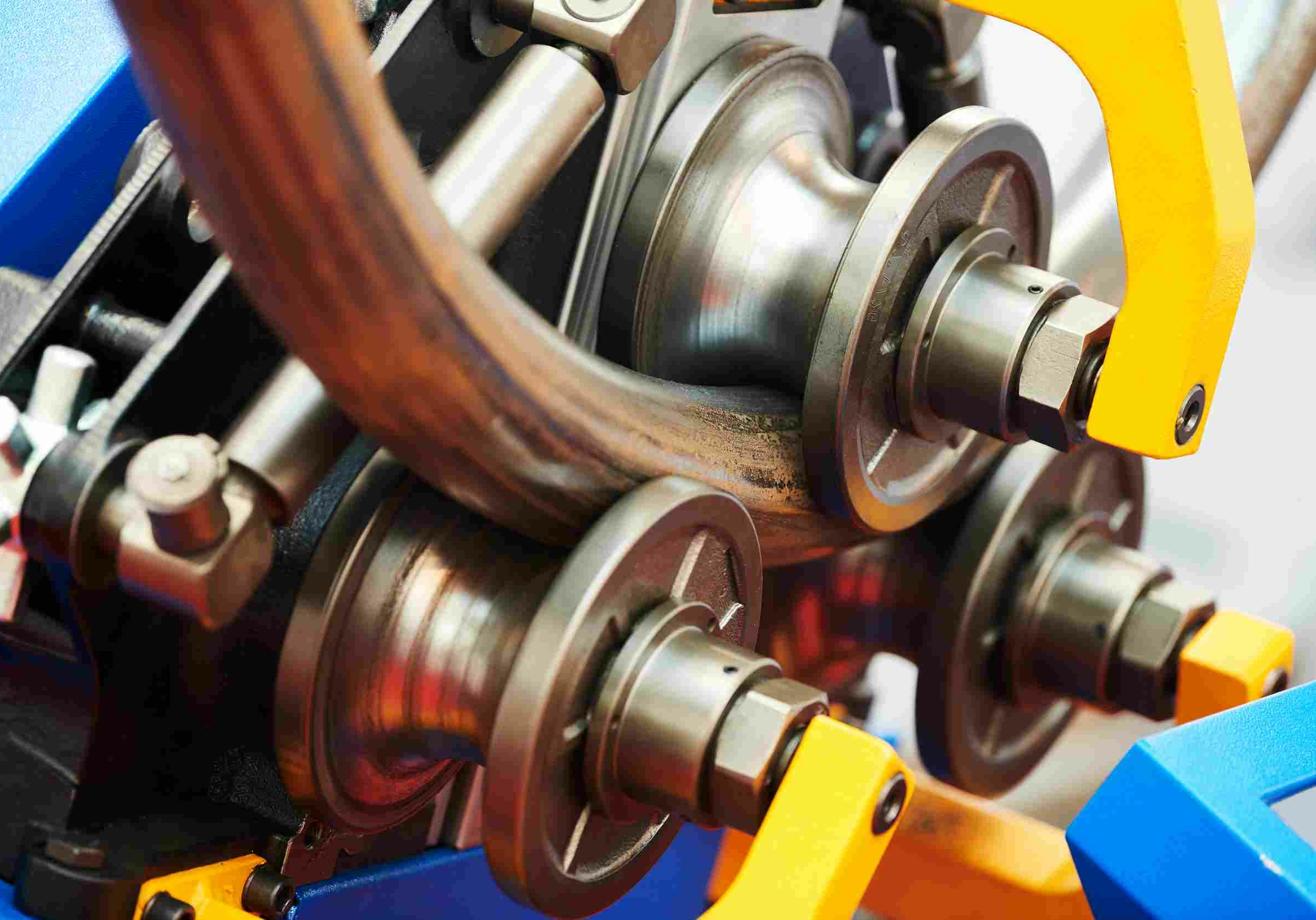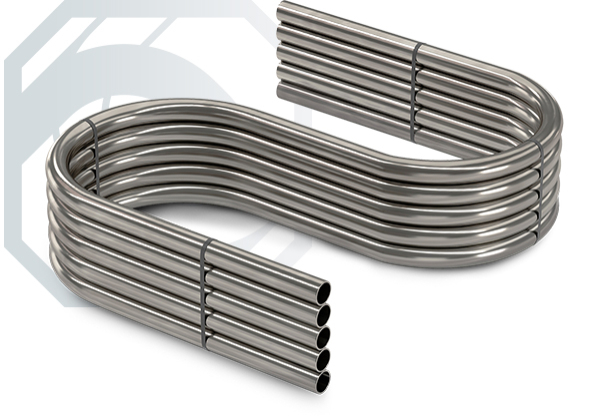When you're working on a project that requires you to bend a tube, it's crucial that you understand its minimum bend radius. Without it, you risk your workpiece becoming overbent, experiencing kinks, or losing its structural integrity.
By ‘bend radius’, we mean the smallest radius you can bend the tube without causing damage. This applies to a variety of tubes, including those of different shapes - like square, rectangular box sections, or oval. In this article, we explore the minimum bend radius of a tube and various factors which may impact it.
Does your project require tube bending? Here at Link Business, we provide quality tube bending with +-0.2 degrees of precision. Get in touch today to learn how we can help you.
The Different Types of Tube Bending
Before we begin, it’s worth noting that there are various types of tube bending methods. We discussed them in detail in a recent article, but let’s recap. The types include:
- Press Bending: This works by pressing a die against a tube or pipe and forcing it to conform to your desired shape.
- Draw Bending: In which a clamp die holds your tube in place, while a pressure die and the radius die rotate around the tube, causing it to bend.
- Roll Bending: Where a series of rollers push or pull the tube through the rolls while slowly pressing the tubing into the desired bend angle.
- RAM Bending: This involves a hydraulically driven RAM forcing the tube against counter dies in an attempt to achieve the desired bend.
- Mandrel Tube Bending: In which an internal support bar of a slightly smaller diameter is inserted into the workpiece tube, which prevents collapsing during the fabrication process.
The method you choose could impact the bend radius of your tube. We recommend consulting our expert team to discuss your requirements further and to determine which method is best suited to your needs.
Our Types of Bending Machine
Here at Link Business, we specialise in providing draw bending and ring rolling tube bending services. Using CNC machinery, we provide +-0.2 degrees of precision, with a 10mm od - 90mm od capacity.
As a reminder, press bending involves pushing your tube through rolls which are free-running rotationally. By contrast, roll bending involves passing the tube back and forth between free-rotating rolls several times to achieve your desired results. With decades of experience working on tube fabrication, we can meet most project requirements, supporting you throughout the process until the delivery of your products.
The Benefits of Tube Bending
But why should you undergo tube bending?
- Increased design possibilities: Depending on your materials and chosen method, tube bending can allow for complex and intricate shapes to be achieved with precision and flexibility.
- Enhanced structural integrity: When done correctly, tube bending provides superior strength and durability compared to alternative fabrication methods, as it keeps the wall thickness uniform and doesn’t require the creation of additional joints or weak points.
- Cost-effective: Unlike other methods, it has limited waste material, reducing your material costs in the long run.
- Can be used with a variety of materials: Making it ideal for a range of project applications and design styles.
These benefits make it a valuable technique used across a range of industries. Our services are used from automotive and hydraulics, right through to medical and disability aids, with the ability to provide hygienic tubes where necessary.
Considerations When Bending Tube
There are several important factors you must consider if you are to bend a tube successfully. Before you begin, we recommend addressing each of these considerations or, if you are unsure, get in touch with our team to discuss your requirements.
Understanding these aspects will help you avoid bending too far and potentially damaging the tubing.
Material Options
The materials you choose for your project can drastically impact the success of your bend. This is, in part, because some materials bend more easily than others - and the easier the bend, the more likely your design will be successfully manufactured without defects.
Beyond that, you must choose a material which will stand the test of time and is suitable for its designed application. For example, if your tubes are designed for outdoor use, you are going to require a weather-resistant material.
Your choice should therefore depend on your design and intended application. At Link Business, we offer tube fabrication for a range of materials, including Steel, Aluminium, and Copper.
Steel
Steel has high formidability, strength and structural integrity even when it is bent and reshaped. It can also be an affordable choice, depending on the type of steel you opt for. Carbon Steel, for example, is a cost-effective choice in low-demand environments (specifically where high corrosion, temperature, and pressure resistance are not required).
Beyond this, steel is highly malleable and durable, with a low melting point and a good heat distribution - making it perfect for a range of applications.
Aluminium
Most types of aluminium are extremely resistant to corrosion. They are also soft and easy to bend, with great ductility and workability - this makes them easy to fabricate, though this malleable nature means the final tube might not be as strong as its steel counterparts.
It’s also worth noting that aluminium has a low elongation percentage, which means it may be more brittle and difficult to process.
Copper
Copper is highly malleable and ductile, making it easy to bend without the risk of cracking. It also has excellent thermal conductivity, is highly resistant to corrosion and can withstand extreme temperatures, making it suitable for both indoor and outdoor applications.
It’s because of these advantages that copper tubes are popular in environments including water distribution, air conditioning and refrigerating, and fire sprinklers.
These are just a few of the materials we provide tube bending for. To learn more or discuss which is best suited to your project, get in touch.
Thickness of the Tube
The thickness of a tube plays a crucial role in the success of a bend. This is because, generally speaking, the thicker the wall of a tube, the easier it is to bend without distortion - and this holds whether you’re working with circular, square or rectangular tubes.
Overall, thicker tubes provide better control and stability, reducing the risk of buckling or cracking during a bend. However, it’s worth bearing in mind that larger tubes are often harder to handle and manipulate - so it's a balancing act between ease of bending and control during the process.
As a rule of thumb, a tube’s wall should ideally be no thinner than 3% of the tube’s Outer Diameter (od), though we recommend getting in touch for confirmation of this before you begin.
What Is the Minimum Bend Radius of Tubing?
Here, ‘Bend Radius’ refers to the radius measured to the centre line of the tube. Your choice here will drastically influence your risk of kinking, damaging, or shortening the life of your tube.
Typically, the smaller the bend radius, the greater the required material flexibility. The ‘Minimum Bend Radius’ is a phrase used to signify the radius below which a tube should not be bent - as doing so will greatly damage your part.
The minimum bending radius should not be less than 2-2.5 the od of your tube, and the shortest straight distance should not be less than 1.5-2 times the od (except in special cases). This is a general rule of thumb and will vary depending on the materials being used and your unique project requirements. We recommend getting in touch for exact specifics - in doing so, we would consider:
- Your chosen tube bending method. The above suggestion is true for draw bending, though the minimum may vary if, for example, roll bending is used.
- Or, in some circumstances, one tube may require multiple bends, in which it may require multiple bend radii.
What to Do When You Have Bent Too Far?
Precision is key for maintaining structural integrity and you want to avoid misplaced pressure during a bending process.
If you have bent your tube beyond its limit, begin by assessing the damage. If the bend is minor, depending on its intended use, you might be able to straighten it with a tube straightener.
If the damage is severe, you may need a professional to reform it. Remember, over-bending can impact the strength of a tube, making it unsafe for use. If your material is severely distorted, we recommend replacing it.
By now, you should have a better understanding of things to consider before bending your parts.
Ultimately, knowing the limits of tube flexibility is essential for maintaining the safety and functionality of tube applications. By considering factors such as the shape and material of your tube, you can determine the optimal bend radius,
Still unsure? Here at Link Business, we provide precision tube bending for a range of applications. With a +-0.2 degree of precision, a 10mm od - 90mm od capacity, and a 24-hour lights-out service, we can provide you with a reliable service which fits your requirements and timeframe. Get in touch today to get a quote.

